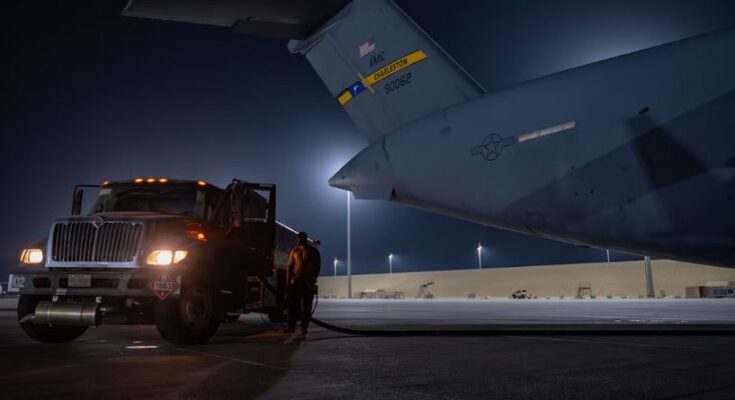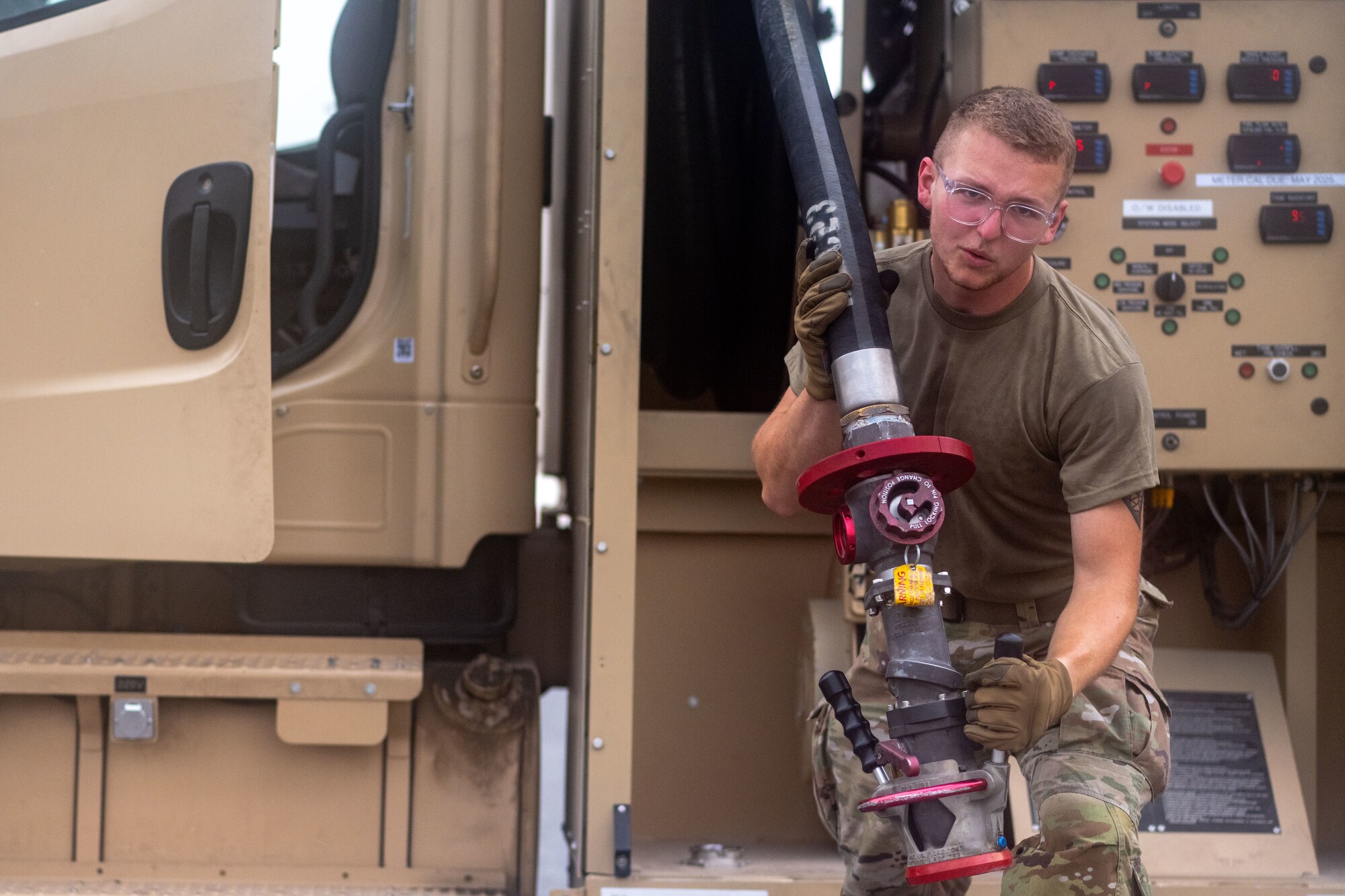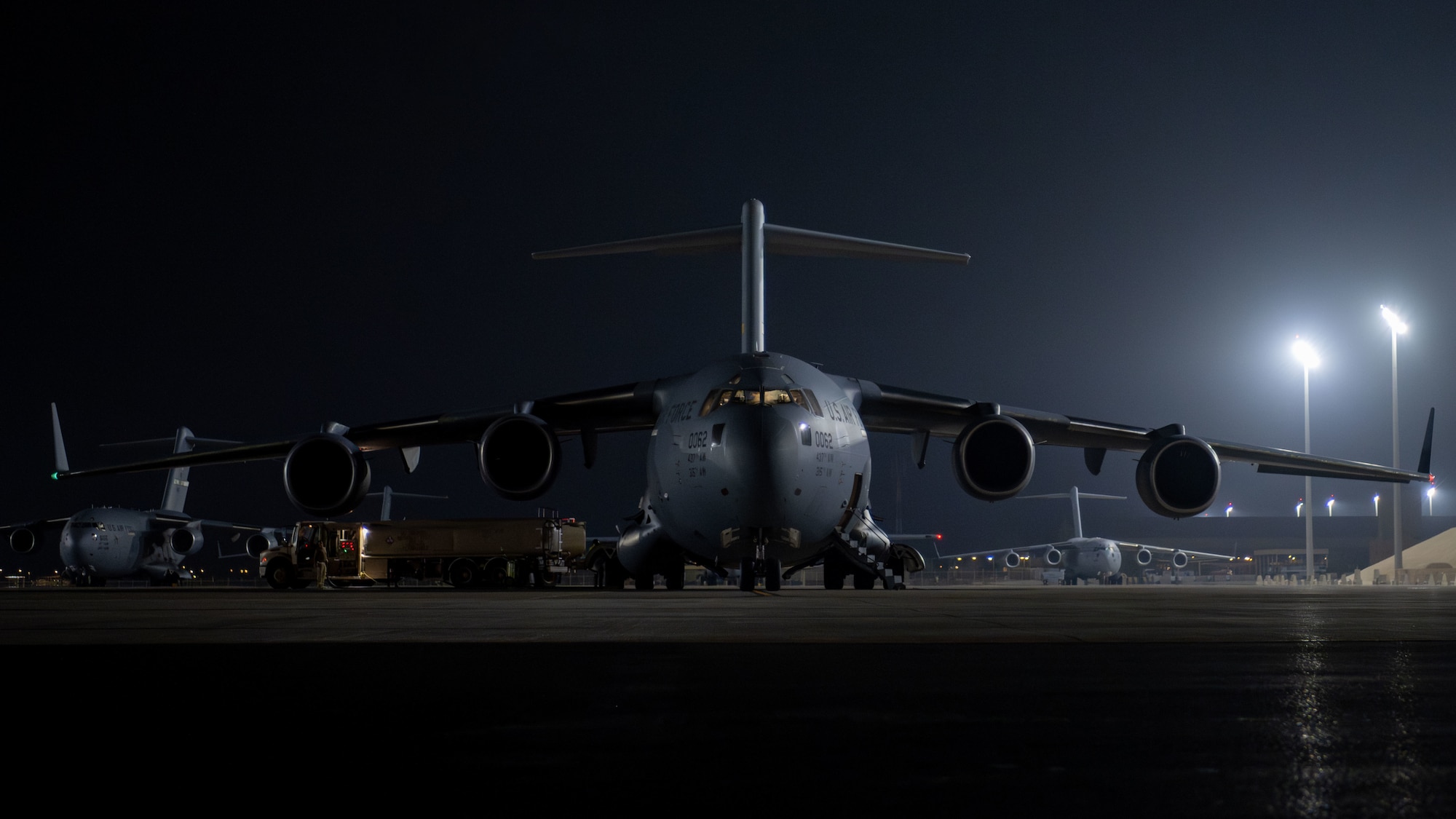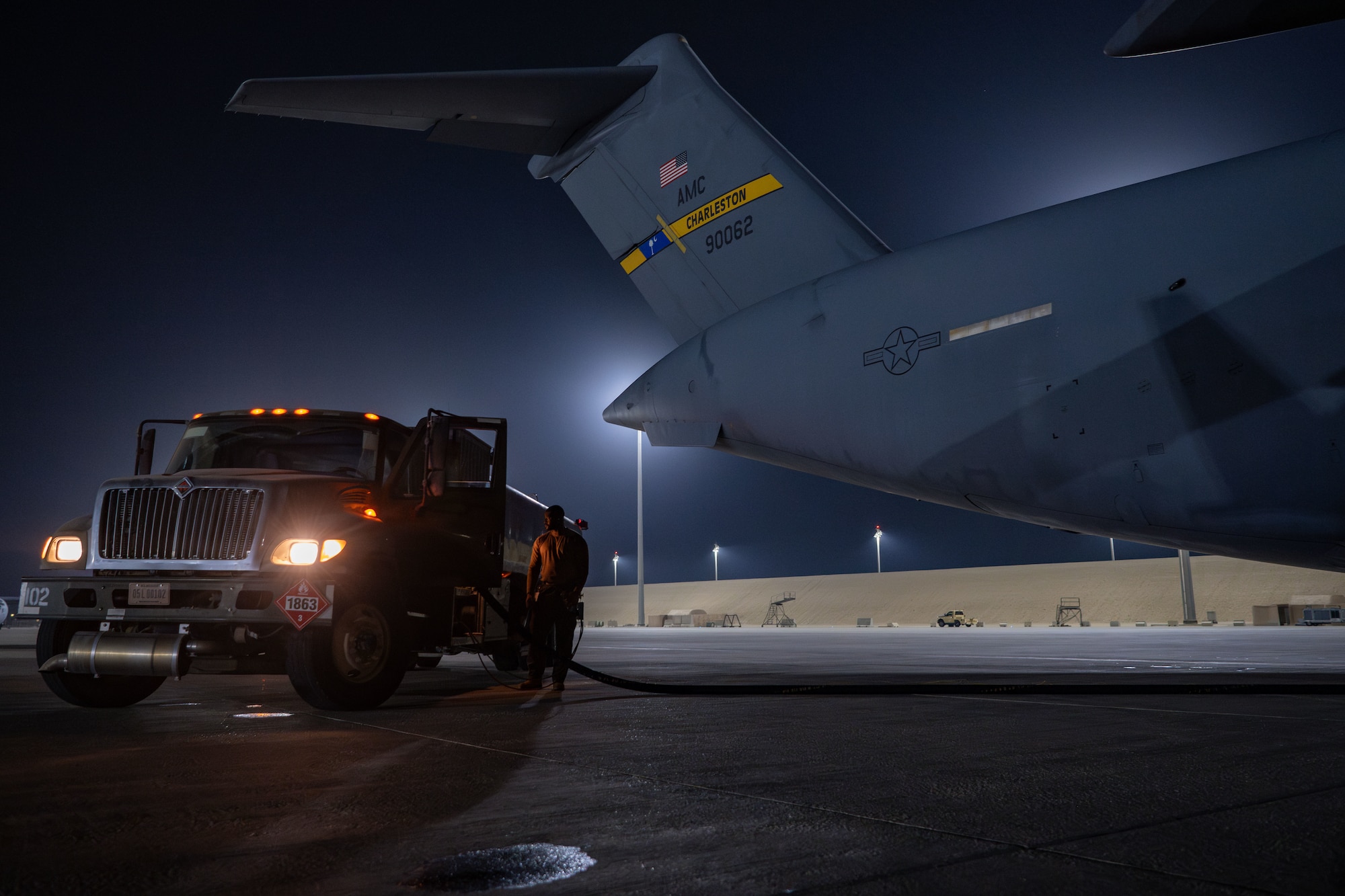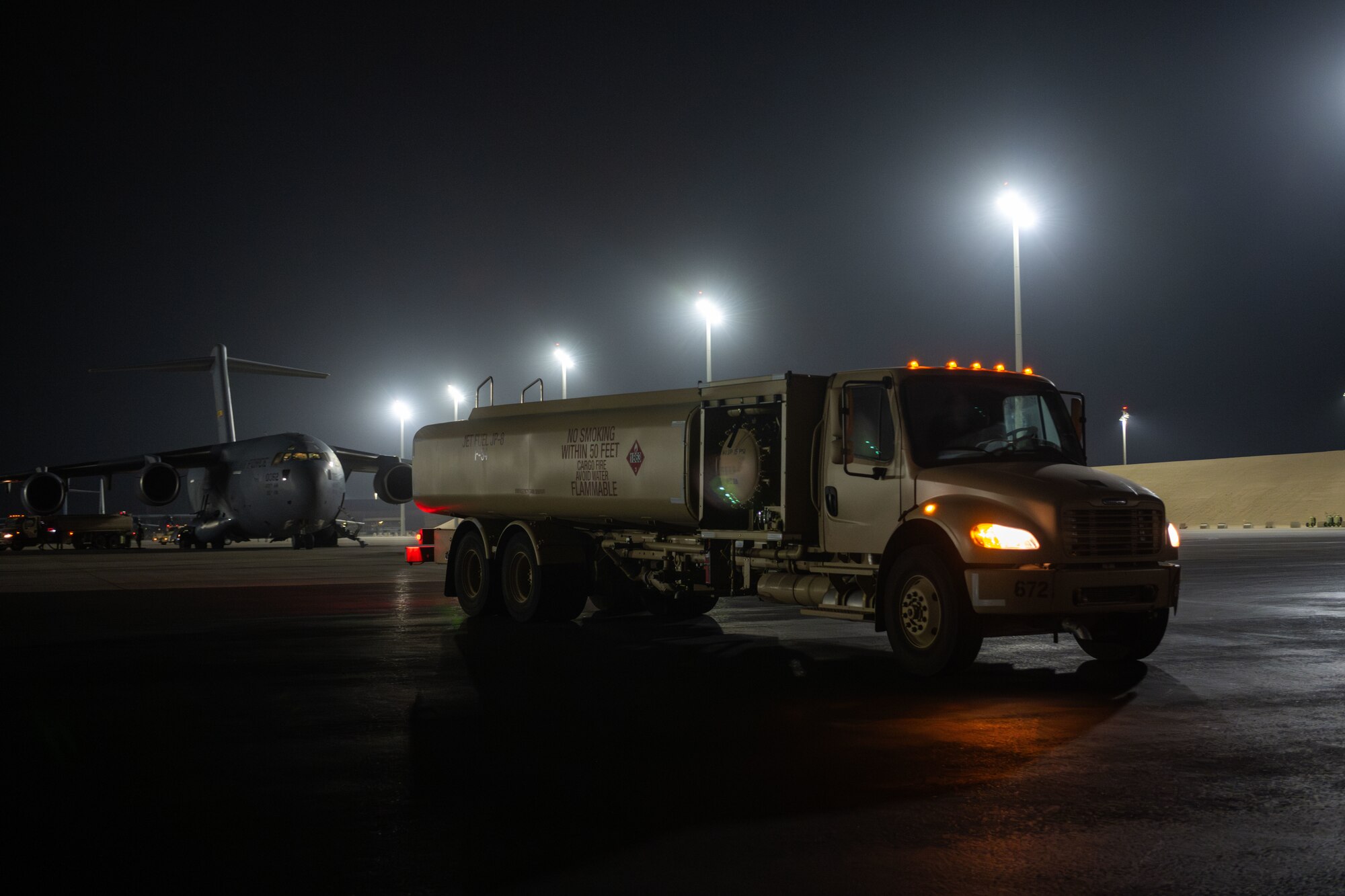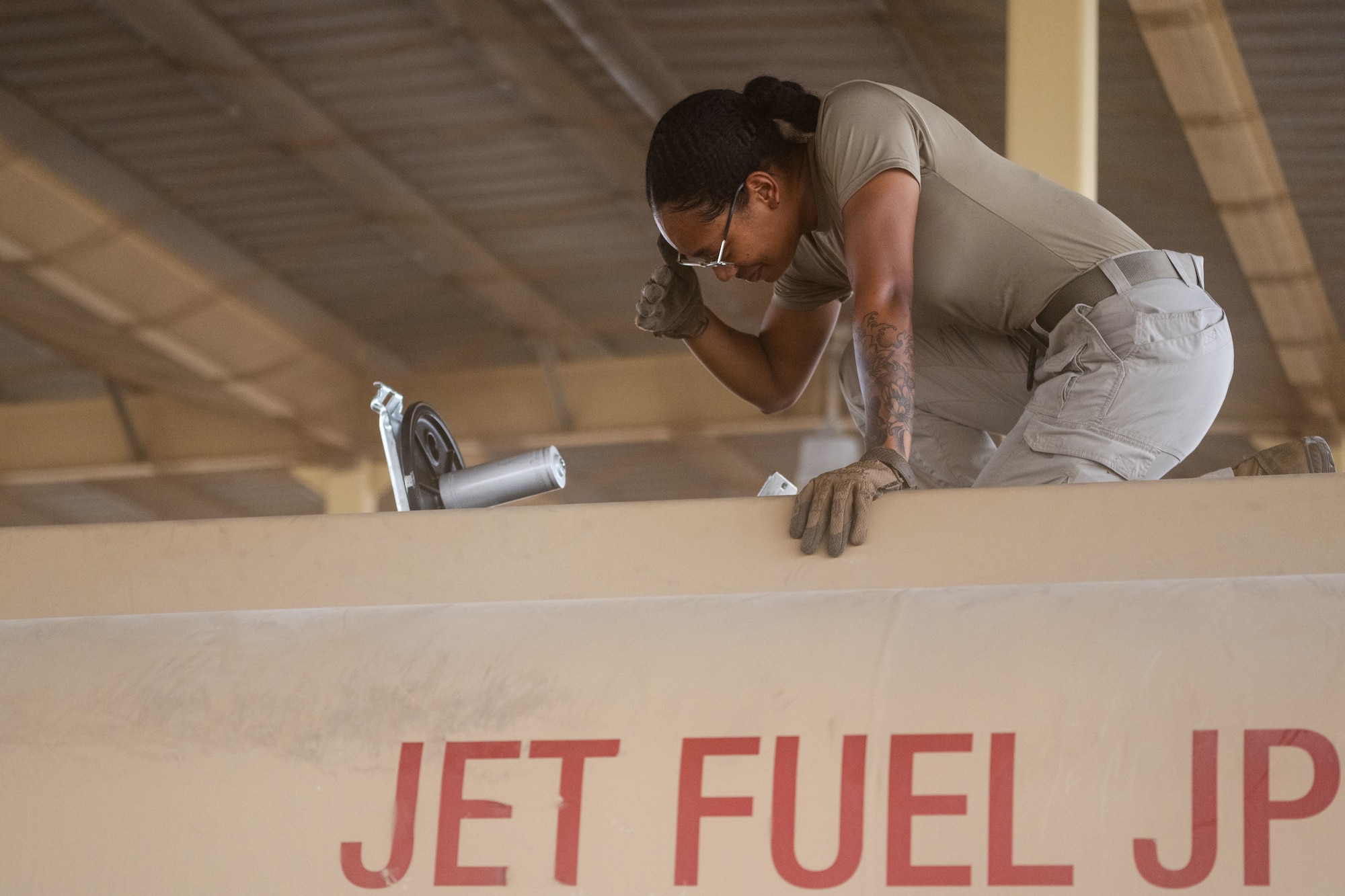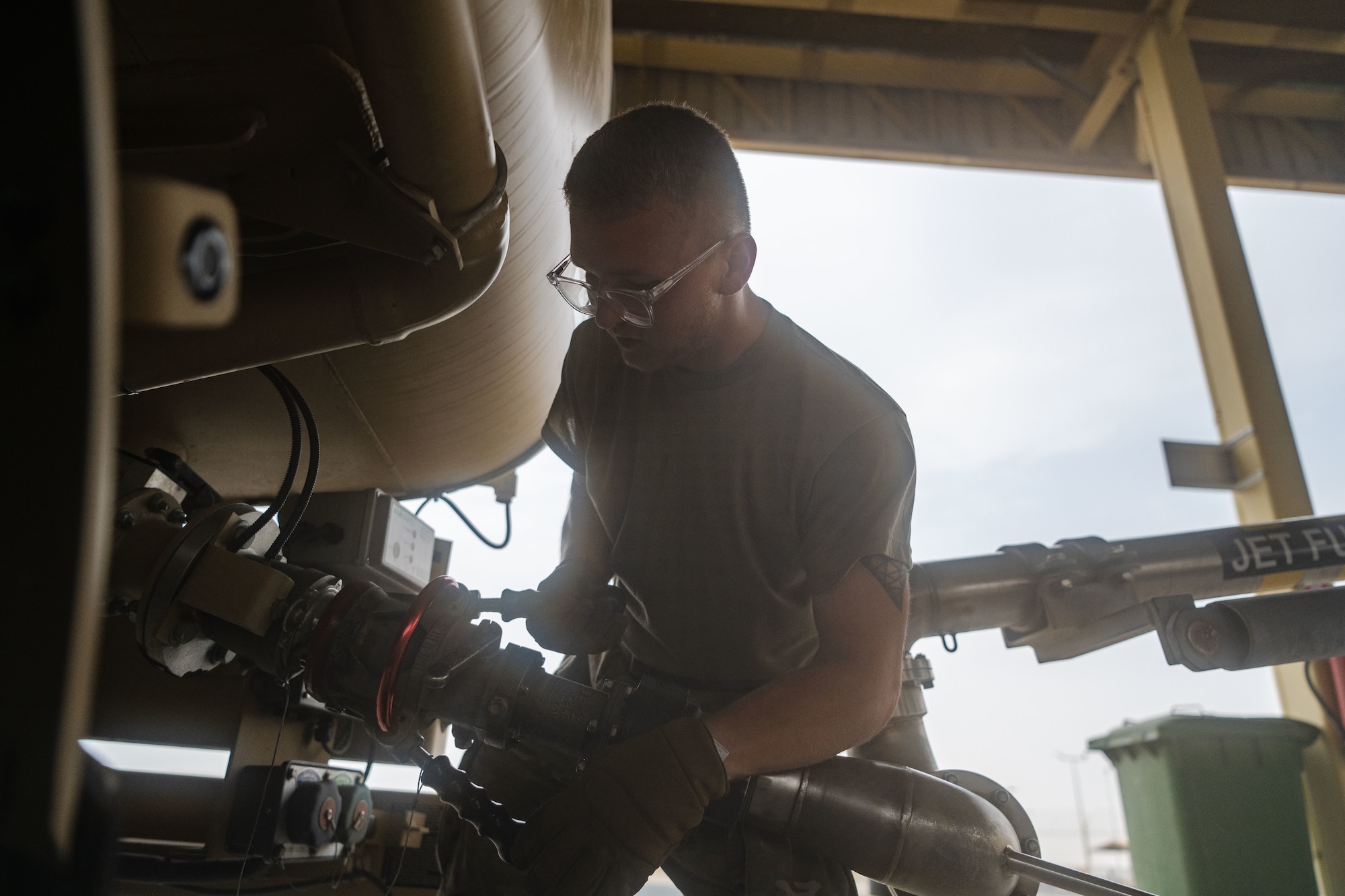379th ELRS leverages hot-pit capabilities to promote regional stability
U.S. CENTRAL COMMAND AREA OF RESPONSIBILITY — In a deployed environment, the tempo quickens, missions become more frequent and impactful, and time is essential. To expedite aircraft generation, the 379th Expeditionary Logistics Readiness Squadron Fuels Management Flight focuses on honing its hot-pit refueling capabilities.
The 379th ELRS Fuels Management Flight is a team of dedicated Airmen enabling the 379th Air Expeditionary Wing’s air mobility assets and any joint or regional partners to continually generate combat airpower any day of the week.
Among the various refueling methods, hot-pit refueling stands out as one of the Fuels Management Flight’s most effective ways to tangibly impact the mission. A hot-pit is a method of refueling that allows fuel distribution specialists to fill an aircraft without having to shut down its engines. This seemingly small change allows aircrew to return to the skies nearly 40% faster.
“One of the keen abilities of the Fuels [Management] Flight is their hot-pit refuel capabilities for any airframe in the entire area of responsibility (AOR),” said U.S. Air Force Capt. Tracy Mankins, 379th ELRS commander. “This capability is essential for enabling agile combat employment, allowing aircraft to quickly return to the air and continue combat air power.”
This refueling method is uncommon at stateside installations and varies depending on the aircraft. To combat this experience gap, the distribution specialists pooled their knowledge to create and conduct familiarization training.
During six intensive sessions, the team trained and certified 20 pilots and eight technicians, significantly increasing the overall knowledge of everyone involved.
“We’re all trained in hot-pit refueling at the beginning of our careers but depending on the aircraft, it isn’t used often,” said a 379th ELRS Fuels Management Flight distribution specialist. “Here, we’re working with heavy aircraft that are flying constantly. Having that refresher is incredibly important because we’re working with a dangerous substance; one mistake impacts not just us but the aircrew, too.”
In addition to the wing’s assets, the Fuels Management Flight supports 20 partnered nations throughout the U.S. Central Command (USCENTCOM) AOR. These regional partners operate alongside the 379th AEW in support of the Ninth Air Force’s (U.S. Air Forces Central) mission to maintain peace and stability across the region.
“If you land here, you need to deal with us at some point during the stay,” said the 379th ELRS Fuels Management Flight non-commissioned officer in charge of fuel distribution. “People from all over the world come through here. It’s really incredible to see their systems, see how they operate, and to learn from one another.”
Despite the heat and humidity, a member of the Fuels Management Flight noted that there is always a fuels distribution specialist on the flight line.
“I see deployment as the big stage,” said the 379th ELRS Fuels Management Flight NCOIC of fuel distribution. “If you don’t ‘practice like you play’ back at the home station, it’s hard to be successful out here. Luckily, that hasn’t been the case with this team. Everyone came in ready to work, and over the last few months, the entire team has grown and excelled incredibly quickly.”
The team’s daily efforts enable the wing’s fleet of KC-135 Stratotankers under the 350th Expeditionary Air Refueling Squadron and C-17 Globemaster IIIs under the 167th Expeditionary Airlift Squadron to execute every designated combat sortie, making their mission to extend global reach even more impactful than the typical deployed location.
During their time here at the epicenter, the 379th Fuels Management Flight has provided fuel to enable thousands of sorties, increasing U.S. force posture in support of Operations Inherent Resolve, Spartan Shield, and Prosperity Guardian. This team of specialists remains a key enabler, not just for the 379th AEW, but for the entire region.
Their hard work and commitment to the mission exceed their predecessors’ expectations and set a high standard for all who follow suit.
“In addition to their refueling capabilities, they also serve as the sole cryogenic hub, overseeing a $2 million operation to coordinate the re-supply of liquid oxygen to five Air Expeditionary Wings,” said Mankins. “This critical function generates 144,000 flight hours across the AOR, highlighting their essential role in maintaining the readiness and effectiveness of the fleet. Their expertise and passion for fuel management and cryogenic products are essential to maintaining a strong and capable U.S. Air Force. Leaders of the pack!”
